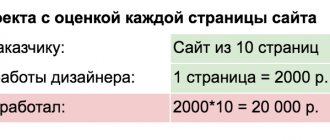Investment risk is the existing probability of partial or complete loss by the investor of his own investments.
All investments are inherently risky. This is the reality in which every investor lives. At the same time, a competent capital owner understands that it is impossible to save money without investing. Firstly, funds can be slowly “eaten up” by inflation. Secondly, money can be stolen instantly by a thief.
There are two extremes between which all investors operate. On the one hand, you can show complete fearlessness and not pay attention to investment risks at all. On the other hand, you can shudder at any blow of wind and keep your money at home in a dresser drawer.
It should be noted that both positions presented above are flawed. Only an investor who knows how to adequately perceive and assess the existing level of risk, and also make the right decisions on this basis can become successful.
Types of investment risks
Depending on the cause of their occurrence, investment risks are divided into:
- Economic. Depend on the general state of the state's economy, as well as its policies regarding the management of markets, taxes and finances.
- Technological. They relate primarily to manufacturing enterprises and depend on the reliability of equipment, the pace of its modernization, the level of automation, and the speed of innovation.
- Social. Social tensions, strikes, and the implementation of regional or federal social programs may affect specific investments. This type of risk is most determined by the human factor.
- Political. The internal life of the country also has an important influence on the implementation of investment projects. The main factors of this group include: a sharp change in the main political course, elections, pressure on the country from other states, introduced administrative restrictions, deterioration of interstate relations.
- Legal. Associated with changes in legislation that may affect the results of investment projects. Legal risks include a reduction in the key rate of the Central Bank, an increase in customs duties, and licensing of certain types of activities.
- Ecological. This group includes factors associated with man-made disasters, pandemics, climate change, and natural disasters.
There are also other ways to qualify investment risks. For example, they are often divided into systemic (exist on a market scale and do not depend on the actions of the investor) and non-systemic (related directly to the object in which funds are invested).
Bank deposit
The most popular and easiest way to invest is to deposit money. You shouldn’t count on high profits on bank deposits, because their yield in 2021 is only 4.2-7% per annum.
Features of deposits:
- money on deposit is insured by DIA for an amount of up to 1.4 million rubles;
- from January 1, 2021, tax on interest income will be paid by Russians who have a total of more than 1 million rubles on bank deposits, and the income on them exceeds the key rate of the Central Bank;
- some deposits can be replenished before the deposit expires;
- You can open not only a ruble account, but also an account in foreign currency (dollars, euros).
A deposit agreement is signed between the bank and the depositor. It indicates interest rates and terms for providing funds for use by the bank.
Among the advantages of bank deposits are minor risks. The disadvantage is low returns, which barely cover inflation.
What are the risks when trading securities?
For this group of investments, the risks are somewhat different, so we will talk about them separately. They are divided into two groups: macro risks and micro risks.
Macro risks, in turn, include:
- Systemic (related to the market as a whole). If an economic crisis or default develops in a country, this affects all financial instruments, regardless of their type.
- Regional. It is important to assess such risks when investing in shares of large city-forming enterprises or, for example, municipal bonds.
- Industry. They exert influence when purchasing shares of companies in a particular industry.
Micro risks are risks associated with a specific issuer or exchange instrument. These include:
- Market risk. Associated with changes in securities prices in response to external events.
- Interest rate risk. Determined by changes in interest rates that affect the market value of an investment.
- Liquidity risk. This is the risk of not being able to convert your investment into cash without a significant loss of your invested capital.
- Business risk. It implies uncertainty about the company's future financial results, that is, the likelihood that its profits may decrease for one reason or another.
Precious metals
If you don’t want to understand finances, monitor the market situation and independently choose assets for investment, pay attention to trust management (TD). Here's how it works: you choose a ready-made investment strategy based on your goals and interests, and a professional manager implements it. It manages your assets for your benefit and reports results regularly.
Features of trust management:
- the goals of trust management, the composition of the investment portfolio and acceptable risks are agreed upon in advance and documented;
- assets transferred for management are not subject to debt collection;
- minimal investor participation - all work on asset management is performed by a professional manager.
The management system is characterized by high liquidity, since money can be withdrawn at any time (of course, if such a clause is present in the agreement). Remember, the success of your investment will depend on the professionalism of the manager.
Ways to reduce risks when investing
Risks are not a reason to refuse investments; they can and should be managed. To reduce financial losses when investing money, adhere to the following rules:
- Diversify your investments. One of the most important rules of investing is: you should not invest all your money in one instrument - it is better to choose several. If one asset makes a loss, others can compensate. If you don’t have time to deal with asset distribution yourself, you can invest in mutual funds. Mutual funds include many investment instruments at once, which reduces the portfolio’s dependence on changes in exchange rates and market conditions.
- Always stick to your chosen strategy. The market situation changes quickly, and investors are always tempted to adjust their portfolio to suit the current environment. But such spontaneous decisions often lead to losses, so during times of high volatility in the market, it is important to follow the original strategy.
- Invest only in tools that you understand. If you are unclear about how a particular financial instrument works, it is better to refuse it or study it carefully before investing money.
- Carefully study the terms of investment. If, when concluding an investment transaction, a corresponding agreement is drawn up, then it must stipulate the conditions for the use of invested funds.
Real estate
Another common way to invest money is buying real estate. The main task of an investor is to choose a liquid asset and manage it wisely.
There are two ways to make money from real estate:
- receive passive income from renting out the property;
- sell the property at a higher price.
You should know! During a crisis, prices for housing and commercial real estate decline. Since any crisis is always followed by a recovery phase, it is worth buying residential and commercial infrastructure at this moment. In the long term, the property may become more expensive.
How to correctly assess investment risk
By properly assessing the risks, you can reduce the likelihood of their occurrence. All assessment methods are divided into two large groups: qualitative and quantitative.
Qualitative risk assessment methods include:
- The method of analogies takes into account the experience gained during the implementation of similar investment projects.
- The Delphi method involves studying the opinions of experts on specific issues.
- Method for calculating the appropriateness of costs - possible threats to investments are studied for each stage of investment, which allows you to promptly stop investments if difficulties arise.
Quantitative assessment involves the use of one of the following types of analysis:
- Monte Carlo method - building a risk-increasing model to study consequences.
- Analysis of possible options for the development of the project by changing its significant parameters.
- Determination of the maximum stability of the project.
- Analysis of the sensitivity of the project to changes in individual parameters.
To calculate investment risks as accurately as possible, several assessment methods should be used at once. In addition, risk analysis can be entrusted to experts - for example, financial advisors.
Own business
To open your own business you need to have an impressive initial capital. There are several ways to open your own business:
- buy a share of a ready-made business;
- open your own business;
- purchase a franchise of a well-known brand.
Before starting your own business or buying a share in a business, carefully study the market. Weigh the degree of possible risks and the level of profitability of a startup or existing enterprise.
What to remember
- When choosing investment methods, you should pay attention not only to their profitability, but also to the risks. For example, when investing in stocks, it is important to take into account that quotes are influenced by many factors: from the state of the global economy to the financial results of the company.
- Risk analysis will allow you to better understand what potential losses you are willing to accept for the sake of high profitability, and will help you choose the optimal investment instruments.
- It is almost impossible to reduce risks to zero, but you can significantly reduce them through proper diversification of investments, strict adherence to the chosen strategy and careful study of investment instruments.
- #Tips for beginners
- #Stock
Was the article helpful?
Thanks for the answer!
Bonds
Bonds are debt securities issued by a company. By purchasing them, the investor actually provides a loan to the issuer (company or government). For the use of money, the bond issuer undertakes to pay the investor interest - coupons.
Bond parameters:
- face value is the amount of debt that the company intends to pay to the owner of the bond upon expiration of its term;
- maturity date - the period for repayment of the debt to the security holder;
- coupon - the amount of interest paid on a bond.
When choosing bonds, you should pay attention to the level of profitability, liquidity of the security and maturity dates.
OFZ
OFZ - federal loan bonds - are one of the most reliable investment instruments. The state represented by the Ministry of Finance of the Russian Federation acts as the borrower.
Features of OFZ:
- the average level of profitability in 2021 is about 4-6% per annum;
- the nominal value of one bond is 1000 rubles;
- OFZ coupon income is not taxed (clause 25, article 217 of the Tax Code of the Russian Federation).
Advice: if you want to get more from your investments, buy OFZs into an individual investment account. In this case, your income will consist of coupon payments and an annual tax deduction - 13% of the amount deposited into the IIS. During the year, thanks to the tax deduction, you can receive up to 52,000 rubles (i.e. 13% of the amount up to 400,000 rubles).
Important: To take advantage of the tax deduction, you must have official taxable income, such as a salary. The IIS must be valid for at least 3 years. If you decide to close your account early, you will have to repay any deductions you received.
- 1. Risk classification
- 2. Project risk assessment procedures
- 3. Ways to reduce investment risk
LECTURE No. 13. The essence and economic nature of investment risk
1. Risk classification
Determining the level of risk is the final stage of investment analysis.
Risk in a market economy accompanies any management decision.
This especially applies to investment decisions, the consequences of which affect the activities of the enterprise over a long period of time.
Identification of risks and their accounting is part of the overall system for ensuring the economic reliability of a business entity.
The initial goal of the effective functioning of the country's economy is to ensure the economic reliability of its entire system.
First of all, this is the ability of economic and organizational decisions to ensure regulation of the system within certain limits.
It is carried out according to several main characteristics: profitability, financial stability and the required level of risk.
In this case, risk acts as a link between the profitability and financial stability of each system under consideration, i.e., a business entity (system) realizes its goals at a certain level of risk.
This should ensure that costs are minimized and sustainability is maximized.
Risk
- this is a consequence of the possible occurrence of an event arising from uncertainty with the likelihood of unexpected financial losses.
Incompleteness or inaccuracy of information about the conditions associated with the implementation of individual planned decisions entail certain losses or, in some cases, additional benefits. This is called uncertainty.
It is customary to distinguish three types of uncertainty.
1. Lack of information. Ignorance of everything that can affect the activities of the organization.
2. Randomness. In any predicted event, there may be deviations as a result of some random external influences: this is a failure in the operation of equipment, a disruption in the logistics of the production process, and much more.
3. Uncertainty of counteraction. For a company, this is mainly the unpredictable behavior of competitors and product customers, as well as inter-collective turmoil.
Risk in the analysis of investment projects is the probability of an adverse event occurring, namely the probability of loss of invested capital (part of the capital) or incomplete receipt of the expected income of the investment project.
The main reasons for the uncertainty of project parameters:
1) incompleteness or inaccuracy of design information;
2) errors in predicting project parameters;
3) errors in calculations of project parameters. Simplifications in the formation of models of complex technical or organizational and economic systems;
4) production and technological risk (risk of accidents, equipment failures, etc.);
5) fluctuations in market conditions, prices, exchange rates, etc.;
6) incompleteness and inaccuracy of information about the financial position and business reputation of participating enterprises (the possibility of non-payments, bankruptcy, failures of contractual obligations);
7) force majeure (natural disasters, wars, etc.);
 uncertainty of the political situation, risk of unfavorable socio-political changes in the country and region;
uncertainty of the political situation, risk of unfavorable socio-political changes in the country and region;
9) risk associated with the instability of economic legislation and the current economic situation. Changes in investment conditions and use of profits.
These uncertainties are typical for any investment project.
Uncertainty is associated not only with an inaccurate prediction of the future, but also with the fact that parameters related to the present or past are incomplete, imprecise, or have not yet been measured at the time of their inclusion in the design materials.
As an economic category, risk is an event that may or may not occur.
If such an event occurs, three economic outcomes are possible:
1) negative (loss, damage, loss);
2) zero;
3) positive (gain, benefit, profit).
Depending on the event, risks can be divided into two large groups: pure and speculative.
Pure risks
mean obtaining a negative or zero result.
Speculative risks
mean obtaining both positive and negative results.
The group of pure risks usually includes the following types:
1) natural risks that are associated with manifestations of natural forces: earthquakes, floods, storms, fires, epidemics, etc.;
2) environmental risks, which act as the possibility of losses associated with the deterioration of the environmental situation;
3) socio-political risks that are associated with the political situation in the country and the activities of the state. This type of risk includes political upheavals, unpredictability of the state’s economic policy, changes in legislation, etc.;
4) transport risks – risks associated with the transportation of goods by transport: road, sea, rail, etc.;
5) commercial risks (actually entrepreneurial) represent the danger of losses in the process of financial and economic activity. They mean the uncertainty of the results of a given commercial transaction.
Based on their structural characteristics, commercial risks are divided as follows:
1) property risks that are associated with the likelihood of loss of the entrepreneur’s property due to theft, negligence, overvoltage of technical and technological systems, etc.;
2) production risks that are associated with losses from production interruption due to the influence of various factors, and primarily with the loss or damage of fixed and working capital (equipment, raw materials, transport, etc.), as well as risks associated with the introduction into production new equipment and technology;
3) trade risks that are associated with losses due to delayed payments, refusal to pay during the transportation of goods, non-delivery of goods, etc.
The group of speculative risks usually includes all types of financial risks that are part of commercial risks. Financial risks are associated with the likelihood of loss of financial resources (cash) and are divided into two types:
1) risks associated with the purchasing power of money;
2) risks associated with investing capital (investment risks themselves).
Risks associated with purchasing power include:
1) inflation risks - when inflation rises, cash income received depreciates in terms of real purchasing power faster than it grows. In such conditions, the entrepreneur suffers real losses;
2) deflationary risks - with an increase in deflation, the price level falls, the economic conditions of business deteriorate and income decreases;
3) currency risks - the danger of currency losses associated with changes in the exchange rate of one foreign currency in relation to another during foreign economic, credit and other currency transactions;
4) liquidity risks, which are associated with the possibility of losses when selling securities or other goods due to changes in the assessment of their quality and use value.
Risks associated with investing capital – investment risks – are:
1) risks of lost profits - risks of indirect financial damage (lost profit) as a result of failure to implement any activity (for example, investing, insurance, etc.);
2) risks of decreased profitability that may arise as a result of a decrease in the amount of interest and dividends on portfolio investments, deposits, loans;
3) risks of direct financial losses, which are divided into the following types:
a) exchange risks - the danger of losses from exchange transactions. These risks include the risk of non-payment on commercial transactions, the risk of non-payment of brokerage firm commissions, etc.;
b) selective risks are the risks of incorrect choice of types of capital investment, type of securities (project) for investment in comparison with other types of securities (projects) when forming an investment portfolio;
c) risks of bankruptcy - the danger as a result of an incorrect choice of investment of capital by the entrepreneur of a complete loss of his own capital and his inability to pay off his obligations;
d) credit risks, which are associated with loss of funds due to failure to comply with obligations on the part of the issuer, borrower or its guarantor. To a greater extent, they are inherent in banking activities. In turn, they can be divided into components: deposit, leasing, factoring, risk of loan non-repayment.
From the point of view of the source of occurrence, the risks of an investment project are divided into two groups:
1) specific (non-systematic, microeconomic) investment risks - risks of the project itself associated with its individual characteristics;
2) non-specific (systematic, macroeconomic) investment risks - risks caused by circumstances of a macroeconomic, regional, sectoral nature external to the project. Thus, non-specific risk depends on industry characteristics and the location of the project.
Another classification feature is the degree of damage caused.
.
In accordance with it, project risks are divided into:
1) partial
when planned indicators, actions, results are partially fulfilled, but without losses;
2) acceptable
when planned indicators, actions, results are not fulfilled, but there are no losses;
3) critical
when planned indicators, actions, results are not fulfilled, there are certain losses;
4) catastrophic
when failure to achieve the planned result entails the destruction of the subject (project, enterprise).
Depending on the possibility of reducing the degree of risk through diversification, risks are divided as follows:
1) diversified
that can be eliminated or smoothed through diversification of the investment portfolio (the correct choice and combination of the investment object);
2) non-diversifiable
that cannot be reduced by changing the structure of the investment portfolio. Most often, this group includes all types of systematic risks. Based on the time at which the risks of an investment project arise, we can distinguish:
1) risks arising at the preparatory stage. These are, for example, factors and actions such as distance from transport hubs; availability of alternative sources of raw materials; preparation of title documents; organization of financing and insurance of loans; formation of administration; creation of a dealer network, repair and service centers;
2) risks associated with the creation of the object. These include the insolvency of the customer, unforeseen costs, deficiencies in design and survey work, untimely delivery of components, dishonesty of the contractor, untimely training of engineers and workers;
3) risks associated with the operation of the facility. At this stage, risks may appear:
a) financial and economic - instability of demand, the emergence of an alternative product, price reductions by competitors, increased production from competitors, rising taxes, insolvency of consumers, rising prices for raw materials, materials, transportation, dependence on suppliers, lack of working capital;
b) social – difficulties in recruiting qualified labor, the threat of strikes, the attitude of local authorities, insufficient wages to retain staff, insufficient qualifications of personnel;
c) technical - instability of the quality of raw materials and materials, novelty of technology, insufficient reliability of technology, lack of power reserve;
d) environmental – the likelihood of massive emissions, harmful production.
All types of risks considered influence investment projects to one degree or another.[7]
The classifications given may not be all-inclusive.
They are determined by the purpose formulated by the classification criterion.
It is quite difficult to draw a clear boundary between individual types of project risks.
A number of risks are interconnected (these risks are correlated), changes in one of them cause changes in the other.
In such cases, the analyst should use common sense and his or her understanding of the problem.
The decision to implement an investment project is made after analyzing its financial feasibility and assessing the effectiveness of the project.
Depending on the exact values these uncertainty factors take, the implementation of the project will occur in different ways and under different conditions.
In this regard, they talk about different scenarios for the implementation of the project.
It is obvious that the feasibility and effectiveness of the project depend on the conditions of its implementation.
At the same time, uncertainty also occurs when it is known that the project will be implemented under different conditions, but it is not known in which conditions. Unlike uncertainty, which is an objective concept (if information is incomplete, then it is incomplete for everyone), the concept of risk is subjective. One participant may evaluate the same change in the conditions of project implementation as significant and (or) negative, and another as insignificant and (or) positive.
Therefore, each participant sees “their own” risks in the same project. For example, for a lender, a risk event is non-repayment of a loan, and for a borrower, it is its non-receipt or untimely receipt.
Despite the potential negative consequences and losses caused by the occurrence of one or another risk factor, project risk is nevertheless a kind of “engine of progress”, a source of possible profit.
Thus, the task of the decision maker is not to avoid risks altogether, but to make a decision taking into account investment risk.
There are several stages to “introducing” risk into investment analysis. At the first stage
It is necessary to conduct a qualitative analysis of project risk.
Its main task is to identify risk factors, stages and work during which risk arises. Only after this are all possible risks identified. At the second stage
, a quantitative risk analysis should be carried out, namely, to determine the degree of both each type of risk and the investment risk of the project as a whole.
At the third stage
, it is necessary to move from assessing the effectiveness of a project precisely defined in all details to assessing the financial feasibility and effectiveness of the project under conditions of uncertainty and measured risk.
At the fourth and final stage
measures are being developed to reduce the risk of the investment project under consideration.
To do this, it is necessary to return to the previous stage of analysis and re-evaluate the effectiveness of the project, taking into account the planned activities.
2. Project risk assessment procedures
Risk analysis can be divided into two types: qualitative and quantitative. They complement each other.
Qualitative analysis is carried out in order to identify risk factors, stages and activities during which the risk arises.
This means identifying potential risk areas and then identifying all possible risks.
Quantitative analysis aims to quantify the size of individual risks and the risk of the project as a whole. This type of analysis is related to risk assessment.
The methodology for qualitative assessment of project risks seems very simple on the surface, but it should lead to a quantitative result, to a cost assessment of identified risks, their negative consequences and stabilization measures.
All factors influencing the increase in risk can be divided into two groups: objective and subjective.
Objective factors include factors that do not directly depend on the company itself.
These are inflation, competition, political and economic crises, ecology, etc.
To subjective factors – those directly characterizing a given company.
These are production potential, technical equipment, level of subject and technological specialization, labor organization, level of labor productivity, degree of cooperative ties, choice of type of contracts with an investor or customer, etc.
At the stage of qualitative analysis, an inventory of all types of project risks is required, which is carried out using the above classifications, and a detailed verbal description of each type of risk affecting the investment project under consideration.
In addition, it is necessary to describe and give a cost estimate of all possible consequences of the hypothetical implementation of the identified risks and propose measures to minimize or compensate for these consequences, calculating the cost estimate of these measures.
It is necessary to emphasize the possibility of constructing and using the “decision tree” method not only in the process of making investment decisions, but also in the process of project implementation.
Changing circumstances in the external environment of the project may require a transition to another branch of decision-making.
The presence of a constructed step-by-step diagram in the form of a “decision tree” will allow the analyst to calculate the risk of such a development of events and minimize the company’s losses.
The use of this method is usually used to analyze the risks of those projects that have a foreseeable number of development options.
Otherwise, the “decision tree” takes on a very large volume, so that it is difficult not only to calculate the optimal solution, but also to determine the data.
The method is useful in situations where later decisions are highly dependent on decisions made earlier, but in turn determine the further development of events.
Monte Carlo method.
Simulation modeling, one of the most powerful tools for analyzing economic systems, allows us to overcome many of the shortcomings inherent in the considered methods for analyzing the effectiveness of projects under risk conditions.
The basis of simulation modeling and its special case (stochastic simulation) is the Monte Carlo method, which is a synthesis and development of sensitivity analysis and scenario analysis methods.
Simulation modeling of investment project risks is a series of numerical experiments designed to obtain empirical estimates of the degree of influence of various factors (output volume, price, variable costs, etc.) on the results that depend on them.
The simulation experiment is divided into the following stages.
1) relationships are established between the initial and output indicators in the form of a mathematical equation or inequality. The resulting indicator is usually one of the performance criteria (NPV, PI, IRR);
2) probability distribution laws are specified for the key parameters of the model;
3) computer simulation of the values of the key parameters of the model is carried out (using programs such as Excel or special software products, for example Risk Master);
4) the main characteristics of the distributions of incoming and outgoing indicators are calculated;
5) the results obtained are analyzed and a decision is made.
This method makes it possible to most fully take into account the entire range of uncertainties in the initial parameters of the project that its implementation may encounter.
In addition, by initially setting restrictions on the required project performance indicators, the information base for conducting project risk analysis can be widely used.
Thus, the Monte Carlo method allows us to obtain interval values of project risk indicators, within which the successful implementation of a real investment project is possible.
The methodology for assessing risks associated with investment, based on the use of the discussed and other special methods, is described in detail in the specialized literature.
The choice of specific methods for assessing the risks of real investment is determined by a number of factors:
1) type of investment risk;
2) the completeness and reliability of the information base generated to assess the level of probability of various investment risks;
3) the level of qualifications of investment managers performing the assessment;
4) technical and software equipment of investment managers, the ability to use modern computer technologies to conduct such an assessment;
5) the possibility of involving qualified experts in assessing complex investment risks, etc.[8]
3. Ways to reduce investment risk
Understanding the nature of investment risk and its quantitative assessment do not always allow for effective management of long-term investments. In the first place are the methods and methods of directly influencing the level of risk in order to minimize it, increase the safety and financial stability of the project organization.
Actions to reduce risk are carried out in two directions:
1) avoidance of possible risks;
2) reducing the impact of risk on the results of production and financial activities.
The first direction is to try to avoid any possible risk for the company. The decision to refuse risk can be made at the decision-making stage, as well as by abandoning some type of activity in which the company is already involved.
Avoiding possible risks includes avoiding the use of large amounts of borrowed capital (financial risk is avoided), and avoiding excessive use of investment assets in low-liquidity forms (avoiding the risk of decreased liquidity).
This direction of risk reduction is the simplest and most radical.
It allows you to completely avoid possible losses, but also does not provide the opportunity to receive the amount of profit that is associated with risky activities.
In order to reduce the impact of risks, there are two ways:
1) take measures to ensure the fulfillment of contractual obligations at the stage of concluding contracts;
2) exercise control over management decisions during the project implementation process.
In the first way, there are several options:
1) insurance;
2) security (in the case of a loan agreement) in the form of a pledge, guarantee, surety, penalty or retention of the debtor’s property;
3) a step-by-step breakdown of the project appropriation approval process;
4) diversification of investments.
Options for management decisions in order to reduce risk can be carried out using the following techniques:
1) reserving funds to cover unforeseen expenses;
2) loan restructuring.
Let's look at some of the ways to reduce project risk.
One of the most important ways to reduce investment risk is diversification, for example, distributing the enterprise's efforts among activities whose results are not directly related to each other.
Any investment decision related to a specific project requires the person making this decision to consider the project in conjunction with other projects and with the existing activities of the enterprise.
To reduce risk, it is advisable to plan the production of goods or services for which demand changes in opposite directions.
Project risk distribution
between project participants is an effective way to reduce it; it is based on the partial transfer of risks to partners in individual investment situations.
It is most logical to make responsible the participant who has the ability to more accurately and efficiently calculate and control risk.
Risk allocation is taken into account when developing the project's financial plan and is documented in contract documents.
insure it
, which essentially consists of transferring certain risks to an insurance company. When making a decision on external risk insurance, it is necessary to evaluate the effectiveness of this method of risk reduction, taking into account the following parameters:
1) the probability of the occurrence of an insured event for this type of project risk;
2) the degree of insurance protection for risk, determined by the insurance coefficient (the ratio of the insured amount to the amount of the insurance valuation of the property);
3) the size of the insurance tariff in comparison with its average size in the insurance market for this type of insurance;
4) the amount of the insurance premium and the procedure for its payment during the insurance period, etc.
Foreign insurance practice uses full insurance of investment projects.
The conditions of Russian reality make it possible so far to only partially insure project risks: buildings, equipment, personnel, and some extreme situations.
Reserving funds
to cover unforeseen expenses - one of the most common ways to reduce the risk of an investment project.
It involves establishing a relationship between potential risks that change the cost of the project and the amount of costs associated with overcoming violations during its implementation.
Foreign experience allows an increase in project cost from 7 to 12% due to reservations for force majeure.
Russian experts recommend the following standards for contingency expenses (Table 1).
Table 1
Recommended reserve standards for contingencies
[9]
In addition to reserving for force majeure circumstances, it is necessary to create a system of reserves at the enterprise for optimal cash flow management.
We are talking about the formation of a reserve fund, a fund for repaying bad receivables, maintaining an optimal level of inventories and the standard balance of cash and cash equivalents.
Reserving funds is essentially self-insurance (internal insurance) of the enterprise.
It should be borne in mind that insurance reserves in all their forms, although they allow you to quickly compensate for losses incurred, however, “freeze” the use of a fairly significant amount of investment resources.
As a result, the efficiency of using the enterprise's own capital decreases and its dependence on external sources of financing increases.
Limitation
as a way to reduce risks, the company sets a maximum allowable amount of funds to carry out certain operations (or stages of the project), in the event of the loss of which this will not significantly affect the financial condition of the enterprise.
Limitation is used by banks when issuing loans, by industrial enterprises when selling goods on credit, determining the amount of capital investments, determining the amount of borrowed funds, as well as in other situations.
An important role in reducing the risks of an investment project is played by the acquisition of additional information.
. The purpose of such an acquisition is to clarify some project parameters, increase the level of reliability and reliability of the initial information, which will reduce the likelihood of making an ineffective decision. Ways to obtain additional information include purchasing it from other organizations, conducting an additional experiment, etc.
Complete and reliable information is a special kind of commodity for which you have to pay, but this expense is recouped by receiving significant benefits from a less risky investment.
Considering all of the above, we can conclude that at present the need to assess the risks of investment projects is no longer in doubt, although the assessment process is imprecise and there is often a temptation to ignore risk considerations because they are vague.
However, project risk should be assessed and included in the investment decision process.
In Russia, due to exceptionally high economic and political instability, the ability to analyze possible risks is of particular importance.
So, from the above it follows: risk in a market economy accompanies any management decision.
This especially applies to investment decisions, the consequences of which affect the activities of the enterprise over a long period of time.
Investment activity is associated with many types of risks that can be classified according to various criteria: by stages of project implementation, by financial consequences, by sources of occurrence, by the possibility of diversification, by the level of financial losses, etc.
Uncertainty in investment analysis refers to the possibility of different project implementation scenarios, which arises due to incomplete or inaccurate information about the conditions for the implementation of the investment project.
In investment analysis, risk is understood as the likelihood of an unfavorable event (scenario) occurring, namely the likelihood of losing invested capital (part of the capital) and (or) not receiving the expected income of the investment project.
Profitability and risk are interrelated categories. Riskier investment options have higher returns, while less risky ones have low but virtually guaranteed returns.
Table of contents
Volatility
Volatility is the rate at which the price of an asset moves. Higher levels of volatility indicate larger movements and broader changes in the value of an asset. Volatility is non-directional value: an asset with higher volatility is equally likely to make a larger move up and down, meaning they have a greater impact on the value of the portfolio. Some investors love volatility, while others try to avoid it whenever possible. In any case, an instrument with high volatility carries more risk in falling markets because it incurs larger losses than an asset with low volatility.











